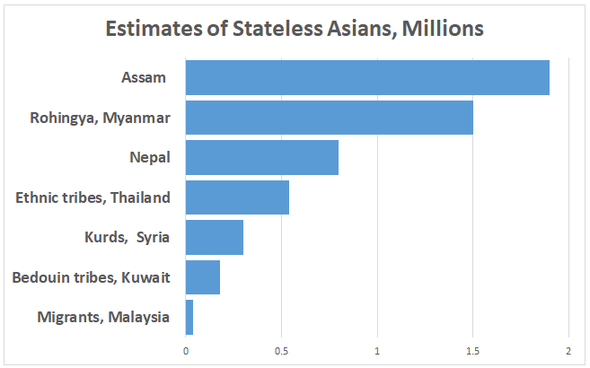Stateless People in Asia: DW
Governments block citizenship for people whose families have lived in regions for multiple generations. India published a National Register of Citizens listing 31 million people in Assam province; those not on the list are considered migrants. “Any applicant unable to prove that they lived in the state before the March 24, 1971 deadline was considered to have ‘doubtful’ status,” reports Rodion Ebbighausen for Deutsche Welle. The date is the day before the start of the Bangladesh Liberation War, which triggered a wave of 10 million refugees. Officials warn non-citizens will be detained or deported. Likewise, millions of Rohingya are considered stateless, unwanted in Myanmar, Bangladesh or India. Restrictive civil rights and a history of colonialism contribute to rejection of people with ethnic or other differences. Before the colonial era, Asia lacked nations with defined borders. “Regional migrations were common, and there were fluid borders between the influential kingdoms and principalities,” Ebbighausen explains. The British promoted migration for big colonial projects like development of the Irrawaddy Delta, she writes. World War II as well as the end of colonial era also contributed to millions of refugees. Newly independent Asia nations adopted laws without considering naturalization and the poor typically lack birth certificates, documenation or property ownership. – YaleGlobal
Stateless People in Asia: DW
Millions of Asians are not citizens of any country, living without legal rights or protection – Asia’s colonial past and modern-day conflicts shape the problem
Friday, September 27, 2019
Read the article from Deutsche Welle about the high numbers of stateless people in Asia.

Stateless: Exact numbers are difficult to come by (Source: Deutsche Welle, UNHRC, Reuters)
Deutsche Welle
© 2019 Deutsche Welle